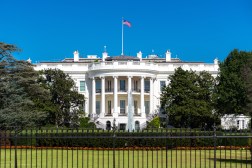Federal efforts to get agencies using shared IT services appear to be working

Federal agencies’ reliance on shared IT services has increased 2% annually since 2017, reversing a previous decline, according to the Professional Services Council.
The government technology advocacy group found the U.S. Department of Agriculture to be driving shared services spending in 2020 followed by the Treasury Department, General Services Administration and State Department. Together those agencies account for 61% of the $1.9 billion spent on shared services.
Sharing quality services is Cross-Agency Priority Goal 5 in the current President’s Management Agenda, and based on the numbers, recent efforts by the Office of Management and Budget to standardize agencies’ IT appear to be paying off.
“This really builds on the emphasis of the federal government in terms of expanding shared services and the quality services management offices, the QSMOs, that have been stood up,” said Steve Vetter, a federal strategist at Cisco, during PSC‘s Federal Market Forecast Conference on Monday. “And you can see the power of what USDA and other leaders have done in that area.”
PSC analyzed federal IT Dashboard data and found a 3% decrease in spending on cloud, down to 3.4% of overall IT spending. Spending on a Software-as-a-Service declined 21%, while spending on Platform-as-a-Service and Infrastructure-as-a-Service increased by 8%.
The move away from SaaS to PaaS and IaaS could be the abrupt shift to telework and remote work necessitated by the coronavirus pandemic.
Of the $29 billion in discretionary funds set aside to deal with the crisis, $3.02 billion has been spent on IT. The Department of Veterans Affairs accounted for nearly 50% of that spending, followed by the Department of Health and Human Services and the Department of Defense.
To date, agencies have largely spent COVID-19 funds for IT on their networks, cyber, end-user devices, hardware, and software. Data science tools — namely machine learning and visualization software — have also been procured to help analyze and communicate COVID-19 data to policymakers.
“Overall the pandemic really created a tipping point for modernization and digital transformation,” said Josh Verville, business development executive at Perspecta.
Cybersecurity spending is increasing at a rate of 3% annually, but that’s slowing — a trend that could very well reverse as agencies look to combat the tripling of cyberattacks during the pandemic, Vetter said.
The National Institute of Standards and Technology’s Zero Trust Architecture guidance and Department of Homeland Security’s Trusted Internet Connections 3.0 guidance have ushered in a more customized approach to cybersecurity at agencies.
“It is not a one-size-fits-all, ram-it-down-a-federal-agency’s throat approach,” Vetter said. “It’s about tailoring solutions for individual agency leads to produce the outcomes that they’re looking for.”
Similarly, GSA has been developing contract vehicles allowing agencies to procure solutions to meet their specific mission outcomes — especially as-a-service solutions, he added.
PSC expects a Federal Acquisition Regulation rule in the next month or so establishing that lowest-price-technically-acceptable source selection is not preferred when procuring solutions to meet mission outcomes, Vetter said.




